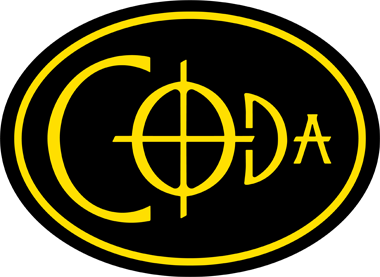Note Naming Flashcards
Super Helpful!
Why Flashcards?
If you are new to reading music or just a little rusty, flashcards are a quick, efficient way to learn the names of the notes on the musical staff*. Once you can name the notes without even thinking about it, learning to read music becomes much simpler!
About Memory
- You retain information better when you study in many short sessions that are spread across time. Flashcards are perfect for this. (So is Coda!)
- The more deeply you process new information, the better you retain it. More about that below.
- Continue to review and overlearn information, even after you think you know it, because that helps to move it into long-term memory.
About these Cards
- Print them on one side of a standard Letter-Size or A4 sheet of paper.
- Cut them along the dotted lines and fold them on the solid lines.
- The cards fold in half and have faint Coda logos to prevent you from cheating by glimpsing the answer through a thin sheet of paper. (Of course, I trust you completely, but… 😉)
How to Use the Cards
- Bring the tiny cards with you for quick study or review sessions, e.g., waiting at the dentist’s office.
- The cards are numbered from 1 to 15. Start by studying only cards 1, 2, and 3 until they seem familiar to you. Then, add one or two more cards… and then one or two more, until eventually you have all 15 in your stack.
- Again, the more deeply you process information, the better you retain it, so create different ways to use the cards to challenge your memory. Close your eyes and picture the five lines and four spaces of the staff and where a particular note is on the staff. (For instance, B is on the middle line, etc.) Draw the staff and notes, study the cards in both directions, finger the notes on Coda, etc.
FACE it! Every Good Boy Deserves Fudge
In addition to the cards, here’s a simple visual aid** to help you start memorizing the lines and spaces of the staff.

*In some regions, such as the UK, the staff is called the stave.
**Depending on where you live, you may choose to learn the note names as either A, B, C, D, E, F, G or as Do, Re, Mi, Fa, Sol, La, Si. In English and Dutch speaking countries, A, B, C is more common. In many other countries, Do, Re, Mi is the norm.




